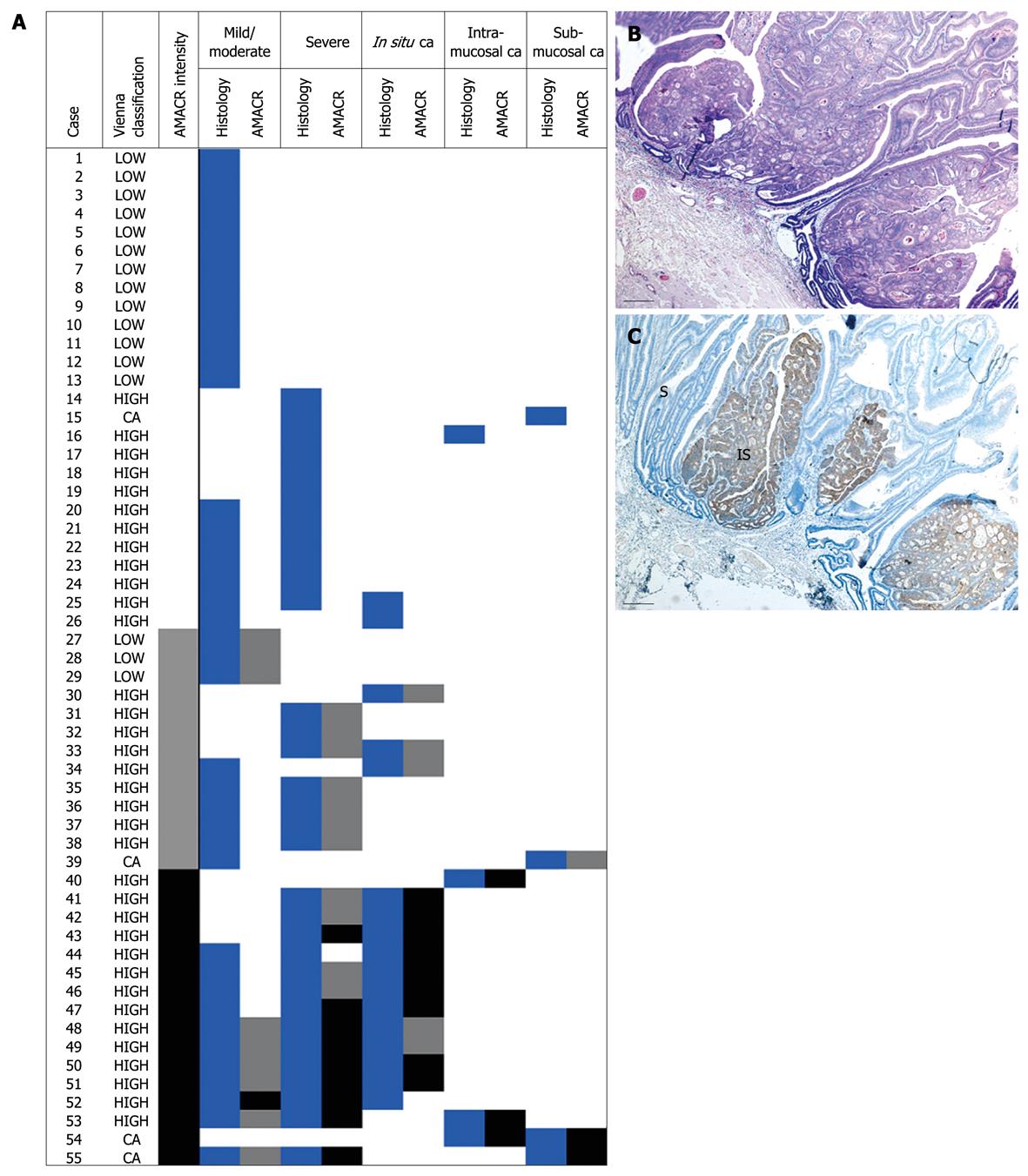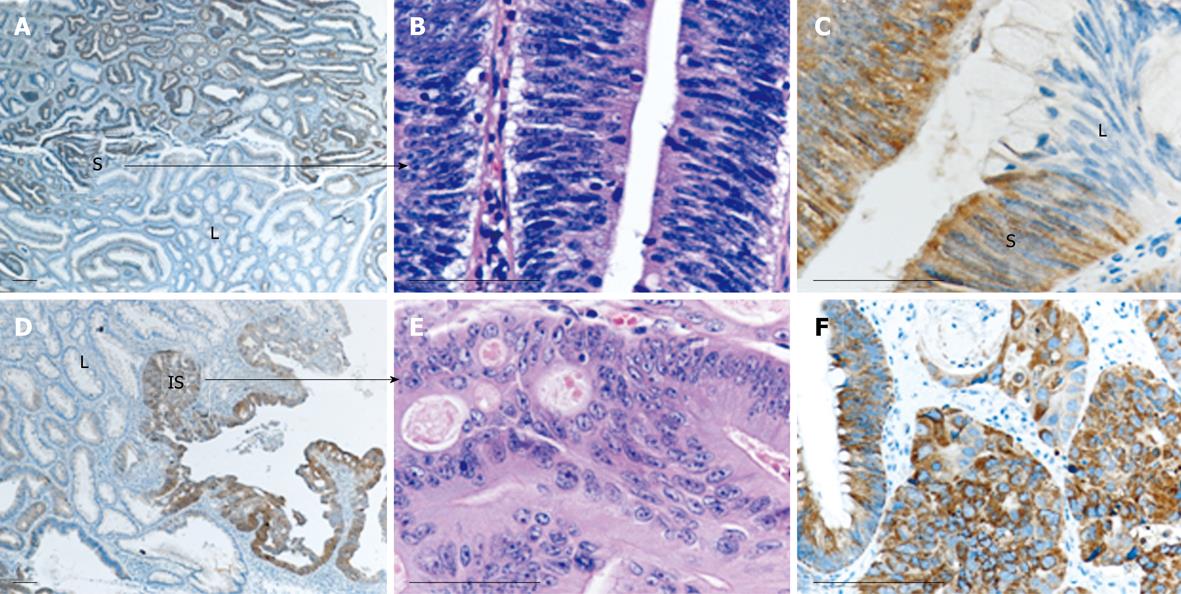Copyright
©2010 Baishideng.
World J Gastroenterol. May 28, 2010; 16(20): 2476-2483
Published online May 28, 2010. doi: 10.3748/wjg.v16.i20.2476
Published online May 28, 2010. doi: 10.3748/wjg.v16.i20.2476
Figure 1 α-methylacyl CoA racemase (AMACR) expression in colorectal adenomas is related to the grade of dysplasia.
A: Cumulative results from all dysplastic areas within each one of the 55 cases examined. Histology columns: white = absence, blue = presence of the indicated histological pattern. AMACR column: white = negative, grey = weak, black = strong staining; B and C: Case 44, as listed in A. In this adenoma with high grade dysplasia (HE staining), AMACR staining is restricted to the in situ component (IS) with severely dysplastic (S) adjacent glands showing negative or focal weak immunoreactivity. Bars: 100 microns.
Figure 2 Heterogeneity of AMACR staining may be observed in different dysplastic areas within the same lesion.
Case 47, as listed in Figure 1A, is shown. This case contained areas of mild/moderate [low-grade (L)] and severe (S) dysplasia, as well as carcinoma in situ (IS) elements. Severely dysplastic (A-C) and carcinoma in situ areas (D-F) are strongly positive for AMACR, while mild/moderate dysplastic areas are negative. Histological distinction between severe dysplasia and carcinoma in situ is apparent in B and E, respectively (HE staining). Bars: 100 microns.
- Citation: Lakis S, Papamitsou T, Panagiotopoulou C, Kotakidou R, Kotoula V. AMACR is associated with advanced pathologic risk factors in sporadic colorectal adenomas. World J Gastroenterol 2010; 16(20): 2476-2483
- URL: https://www.wjgnet.com/1007-9327/full/v16/i20/2476.htm
- DOI: https://dx.doi.org/10.3748/wjg.v16.i20.2476










